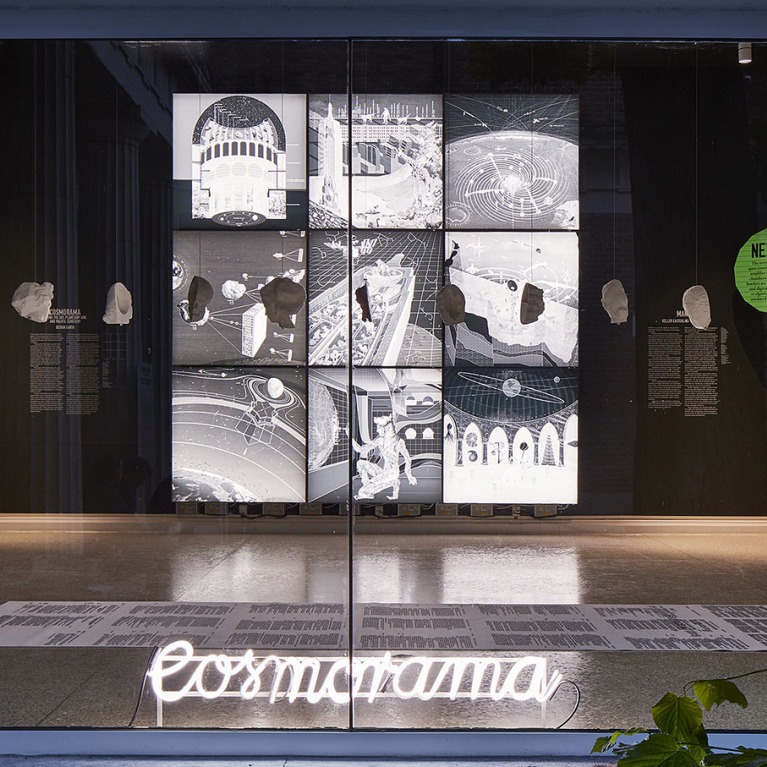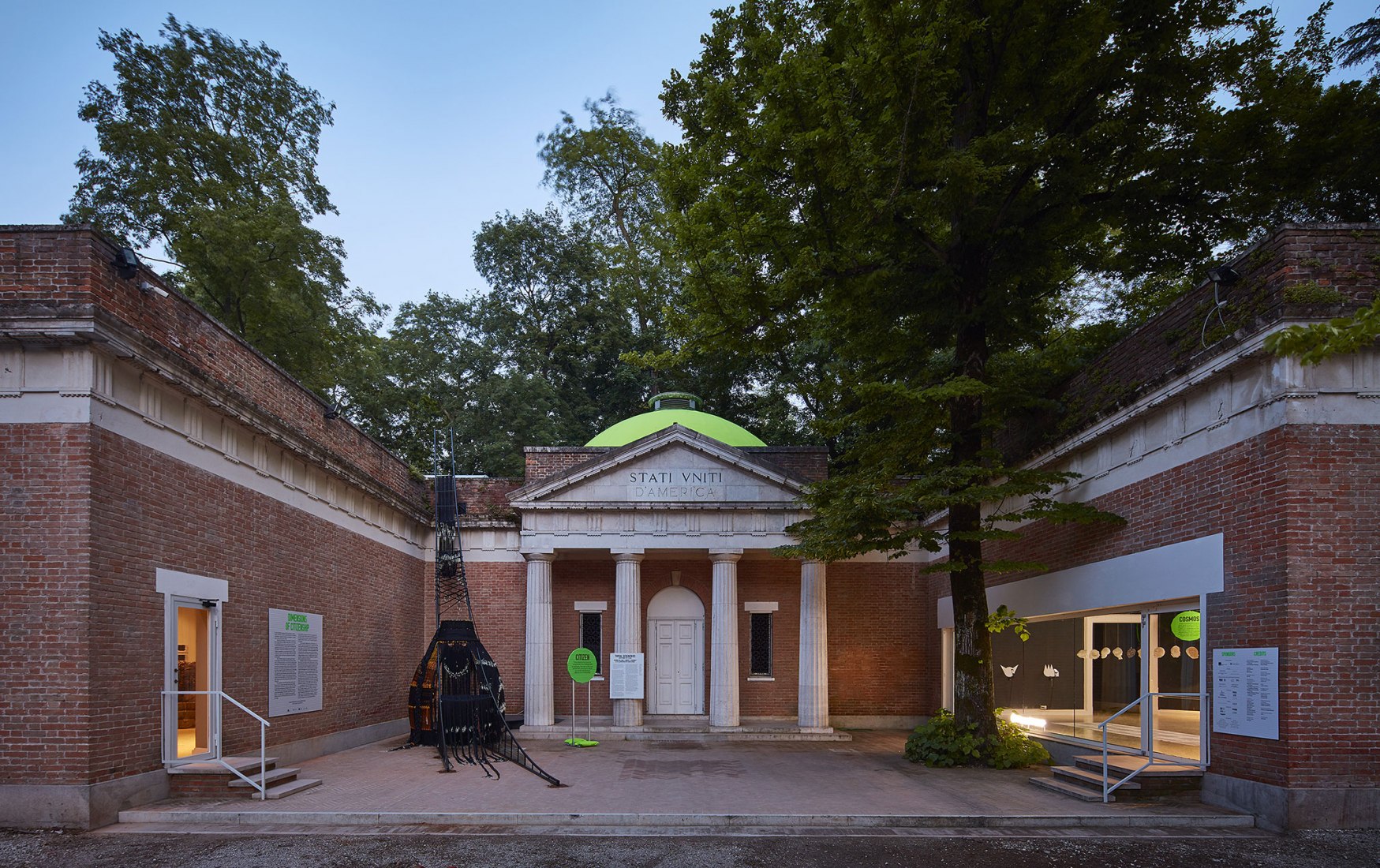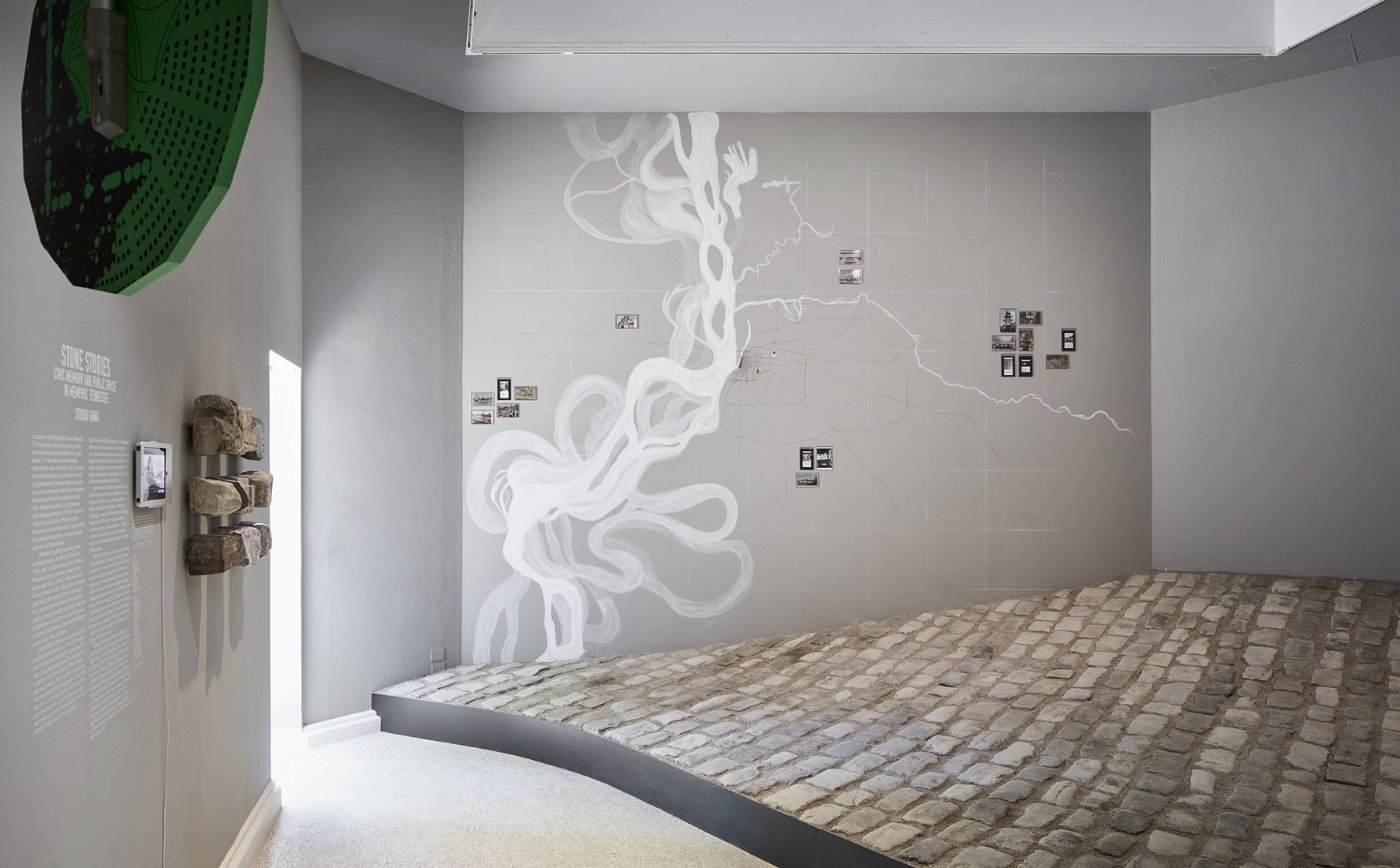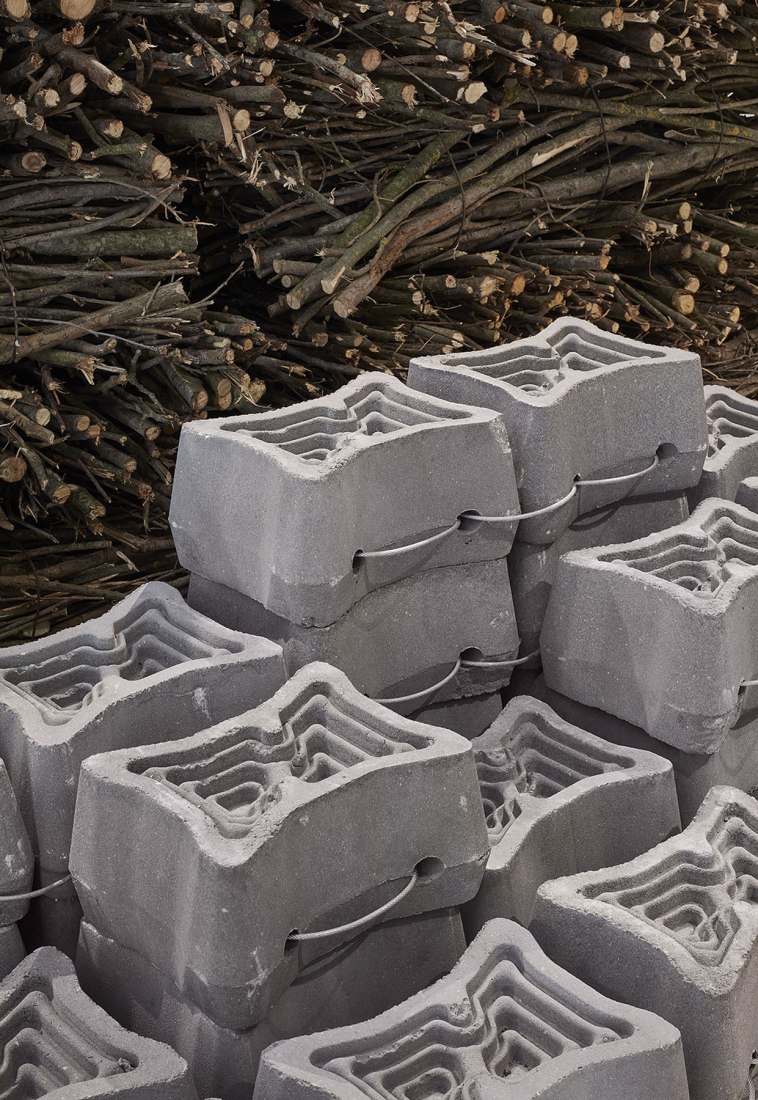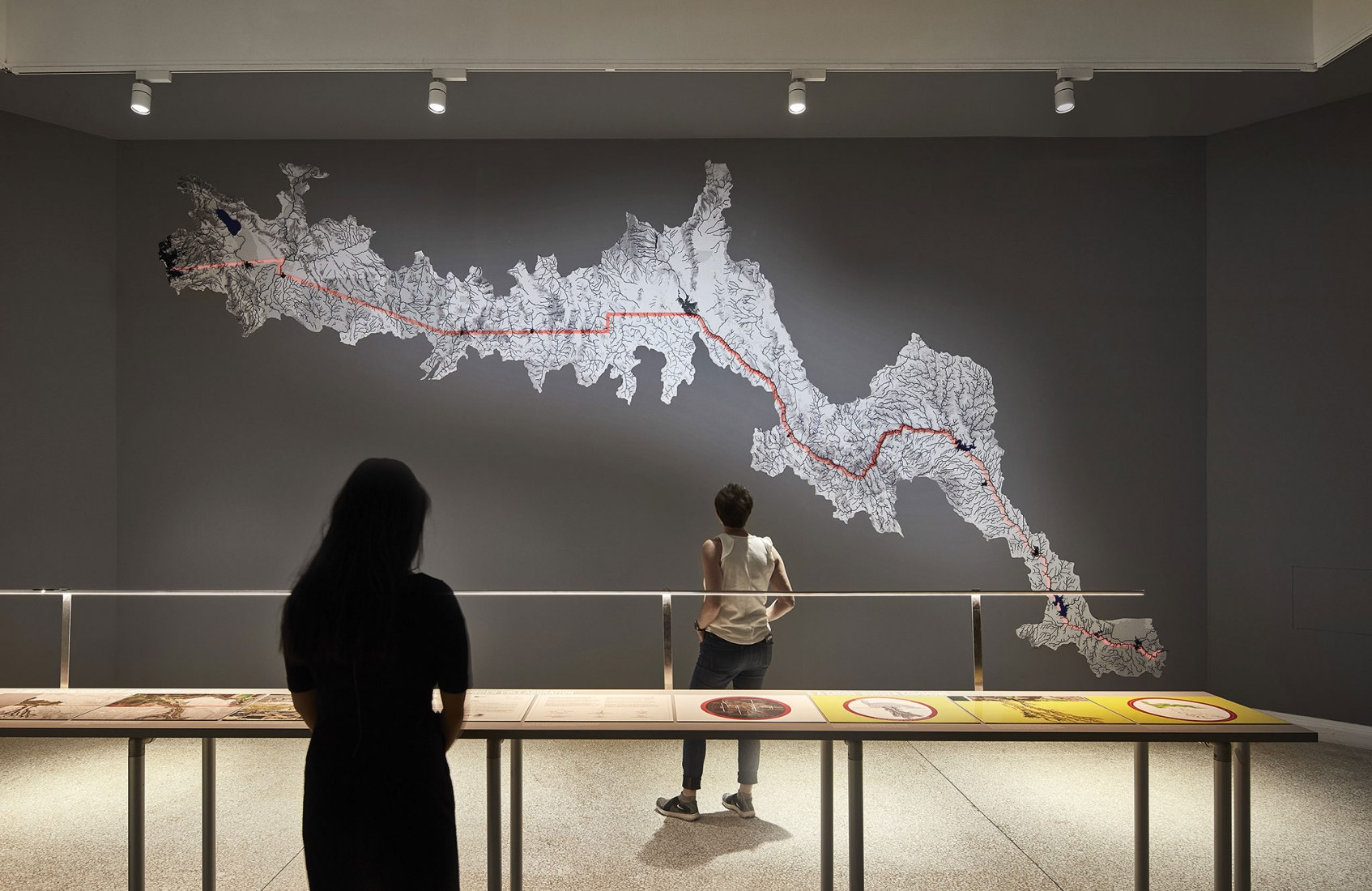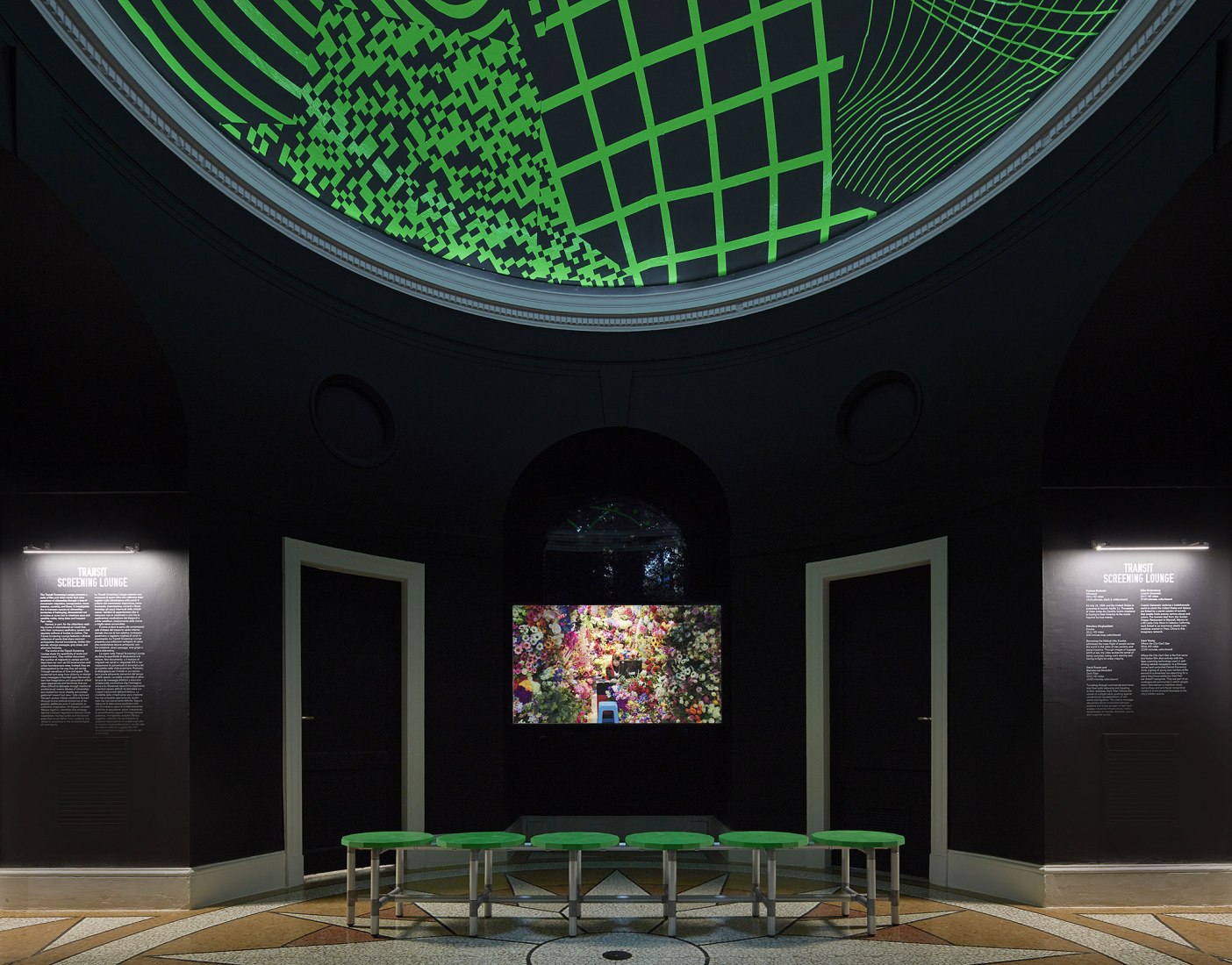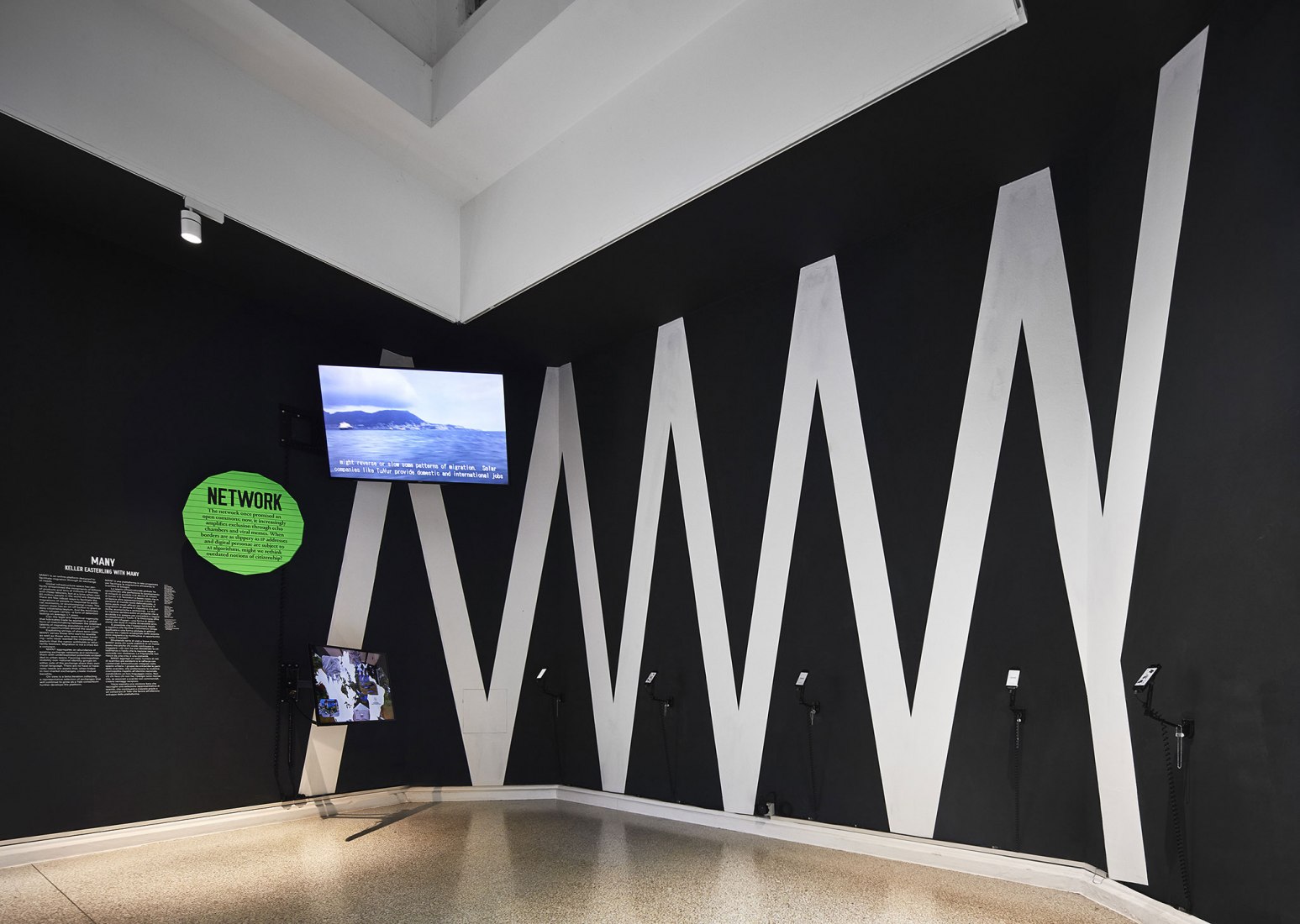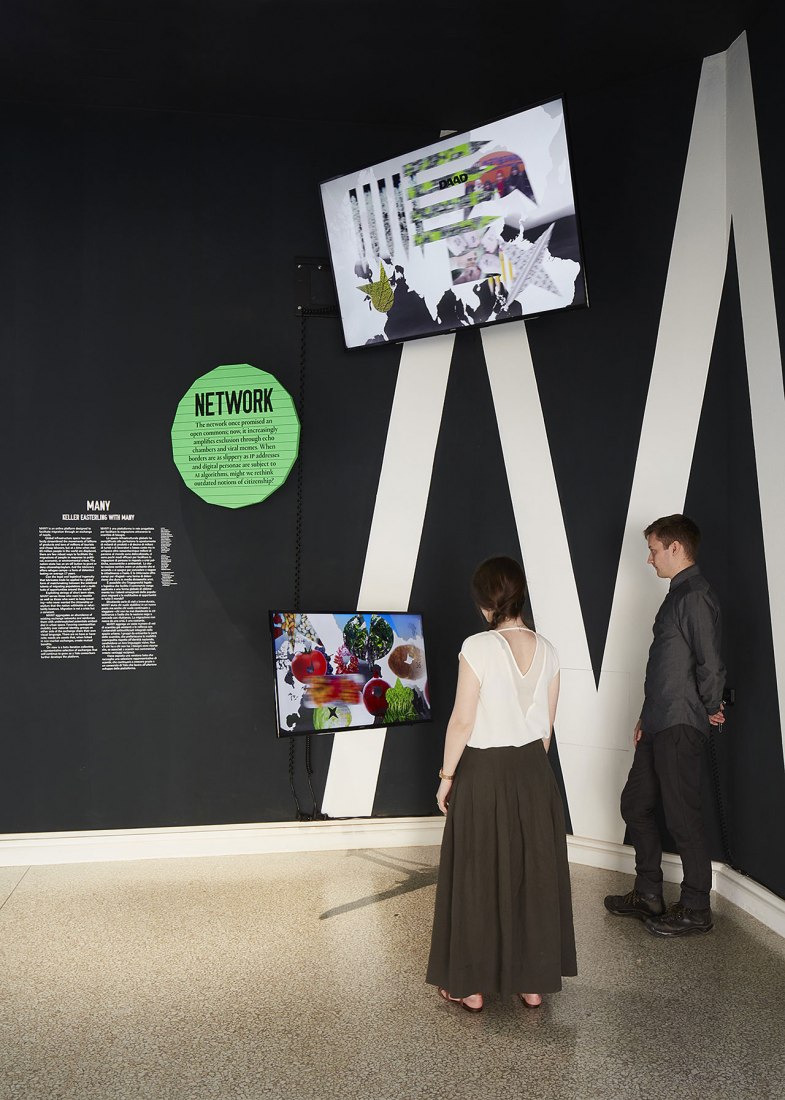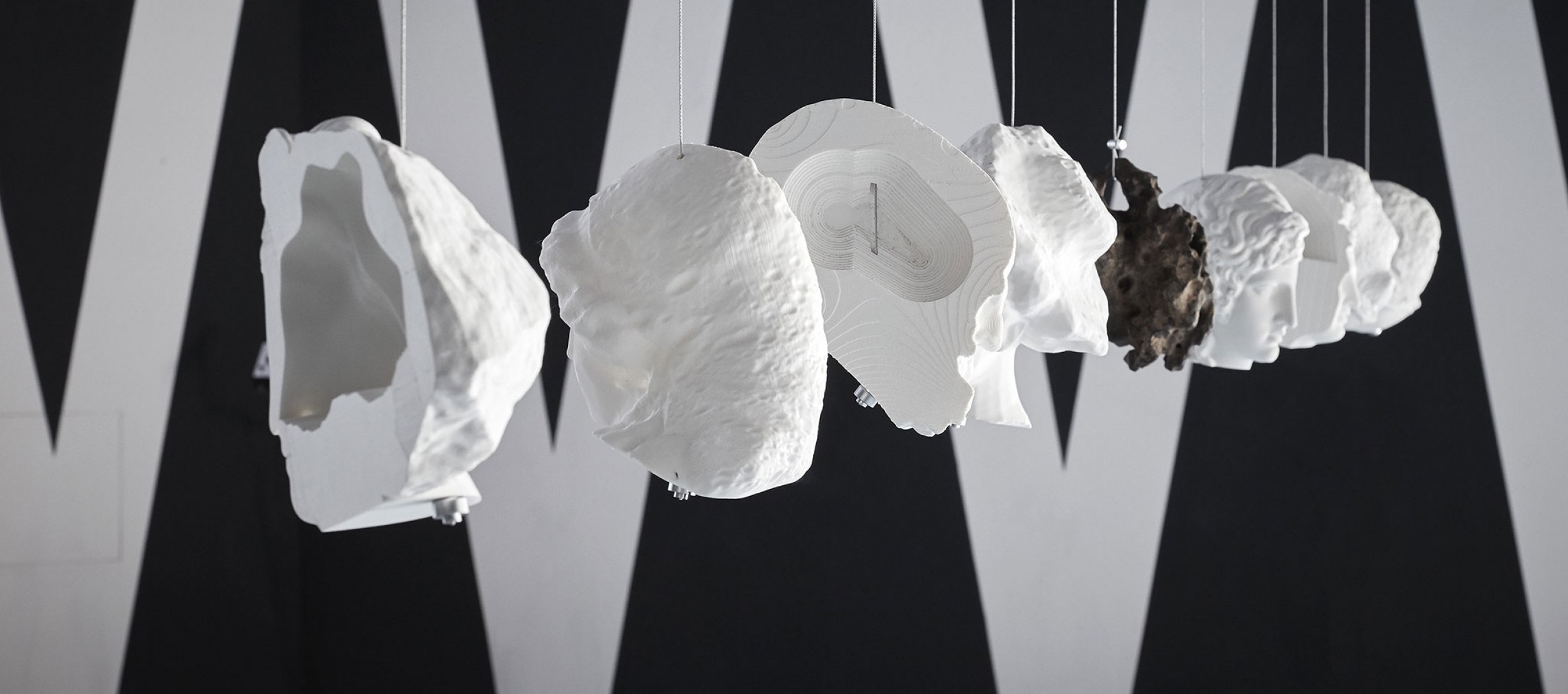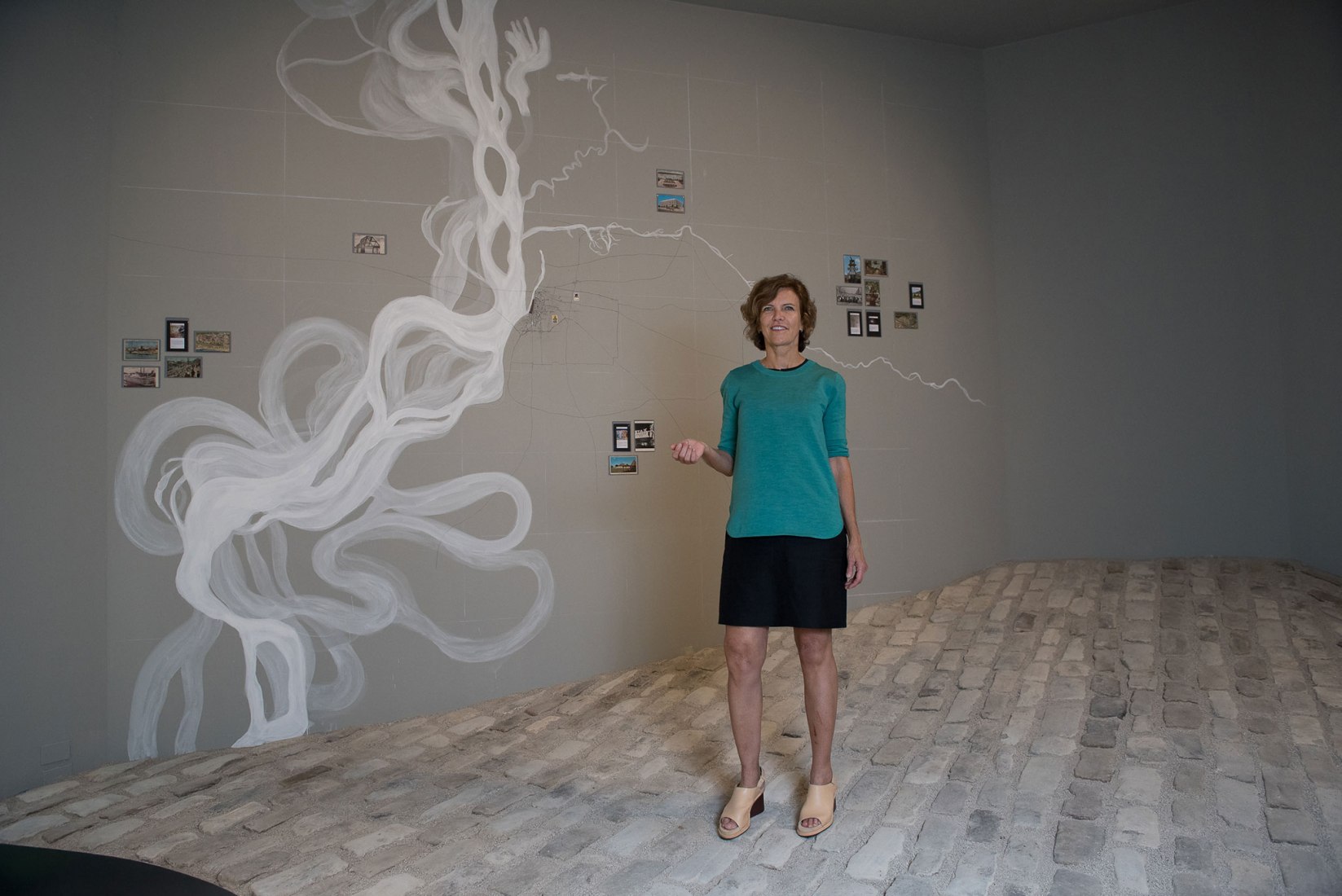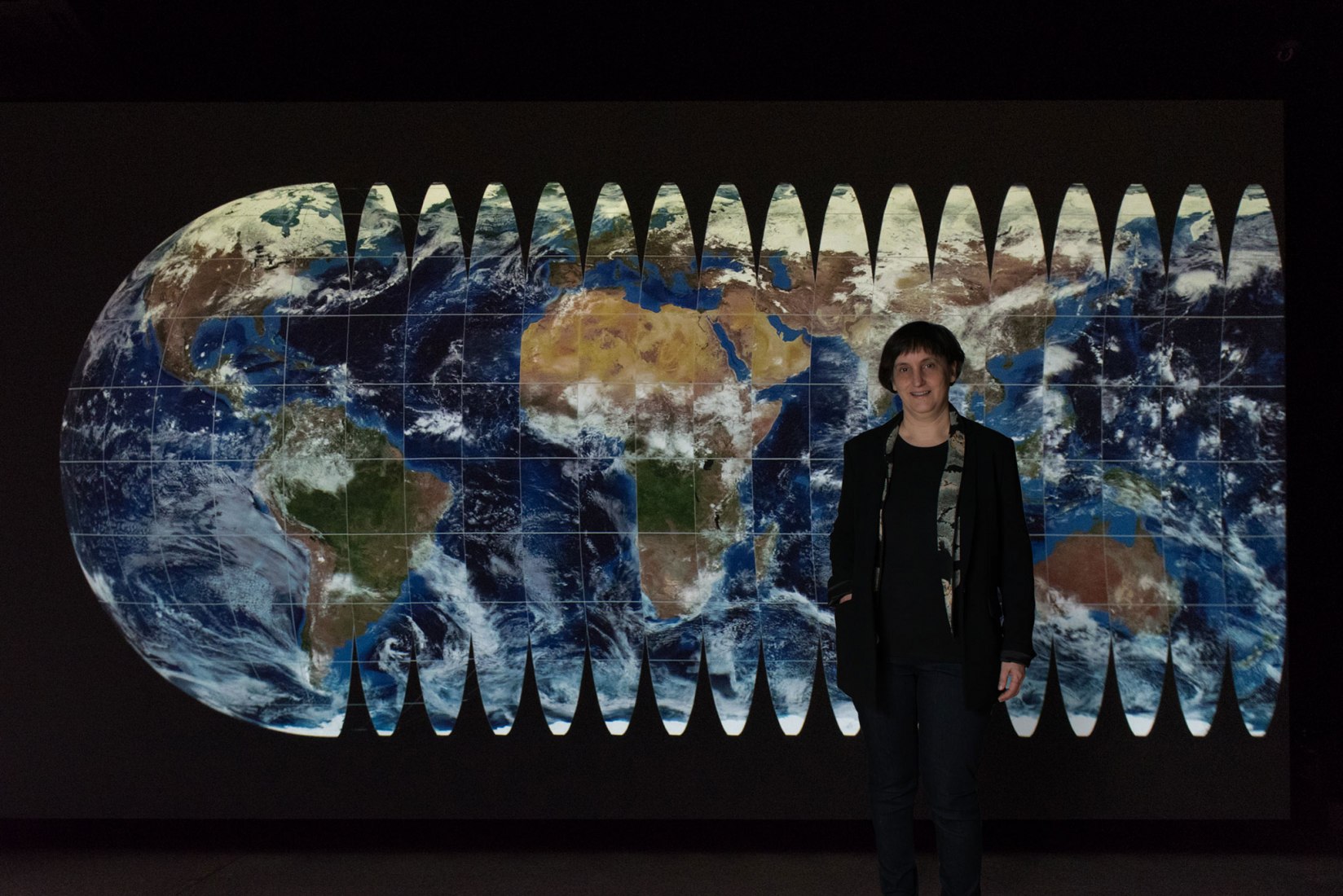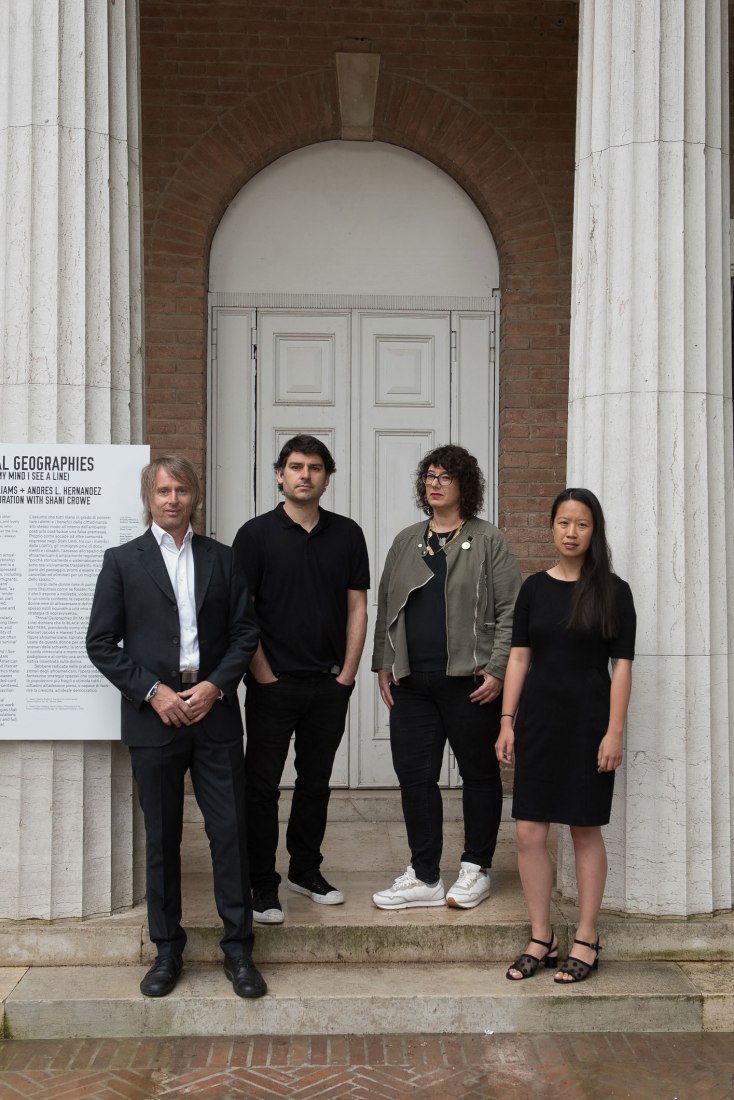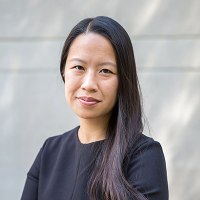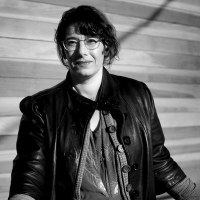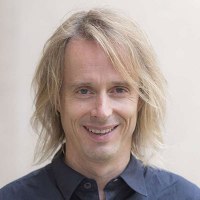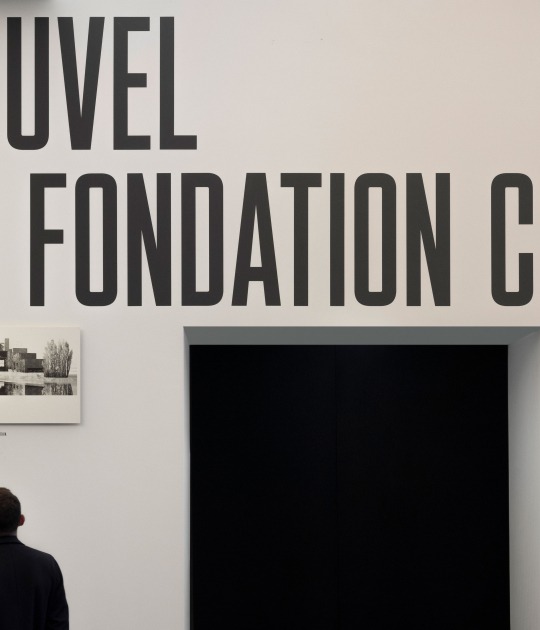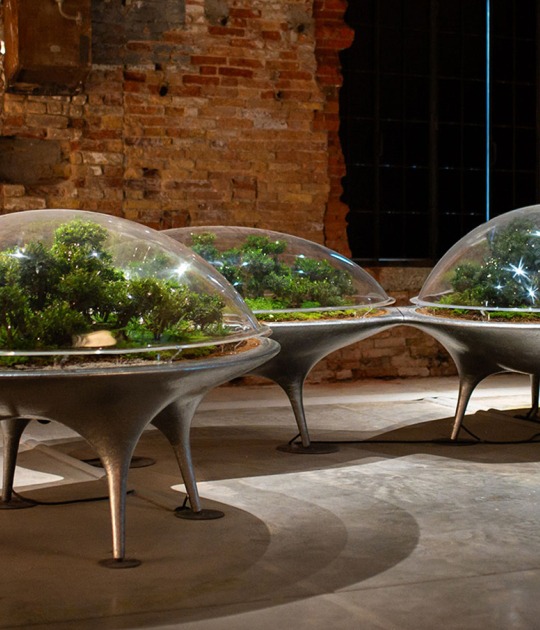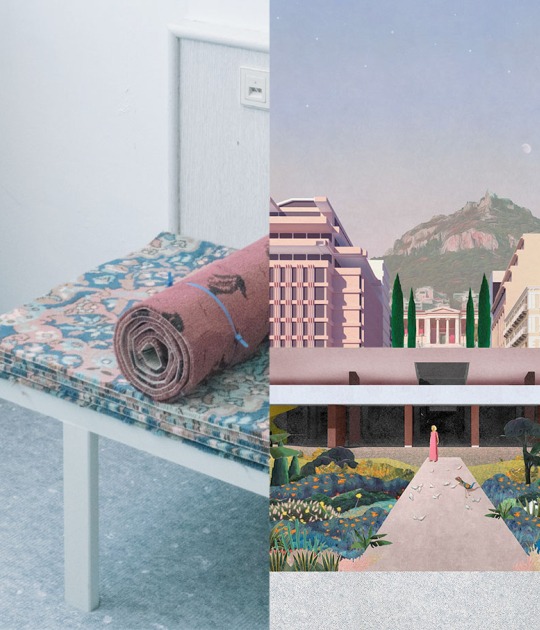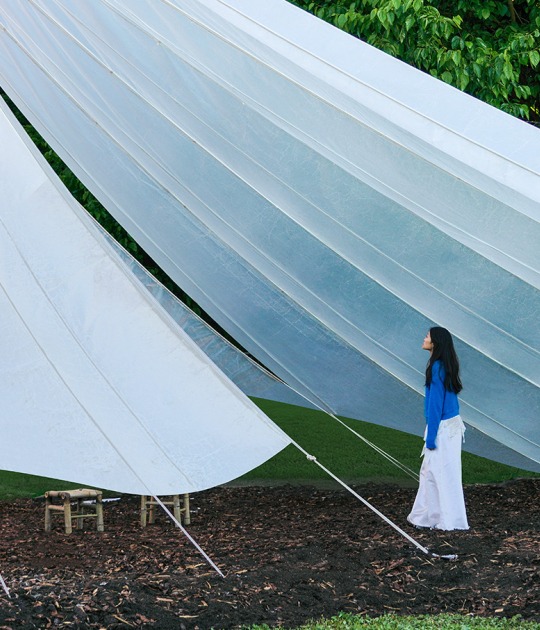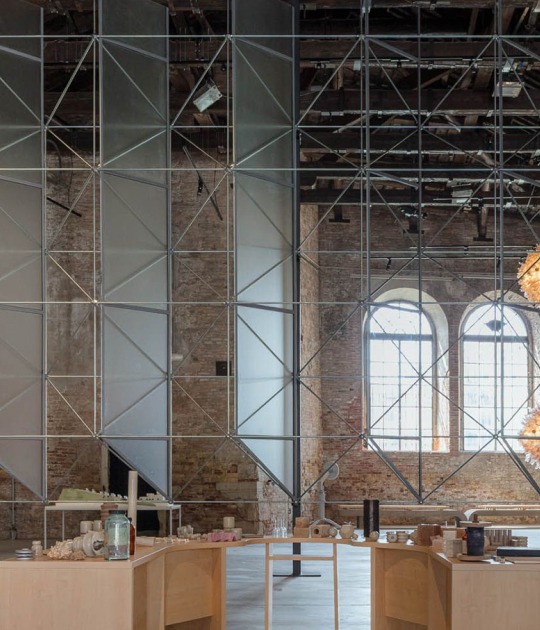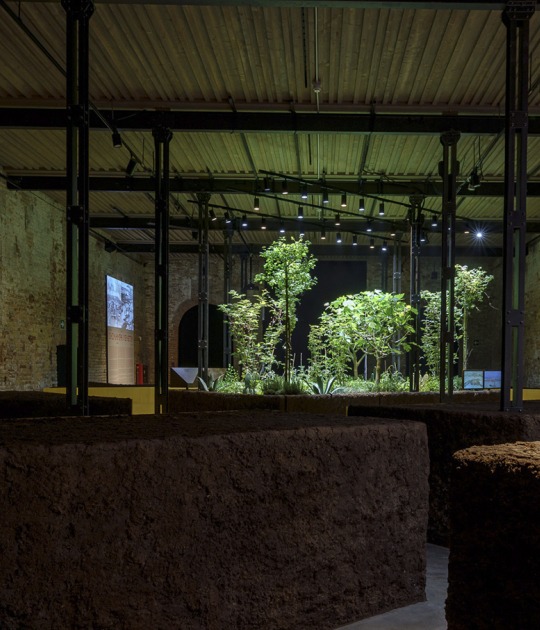The U.S. Pavilion explores seven spatial scales: Citizen, Civitas, Region, Nation, Globe, Network, and Cosmos. These scales, telescoping from body to city to heavens, broadly position citizenship as a critical global topic. Installations by architects, landscape architects, artists, and theorists investigate spaces of citizenship marked by histories of inequality and the violence imposed on people, non-human actors, and ecologies. The installations and the film and video works on view do not solve the complex relationships of governance, affinity, and circumstance that bind us. Instead, they use architecture’s disciplinary agency to render visible paradoxes and formulations of belonging.
Scale: Citizen / Amanda Williams + Andres L. Hernandez, in collaboration with Shani Crowe / Thrival Geographies (In My Mind I See a Line)
"I seemed to see a line, and on the other side of that line were green fields, and lovely flowers, and beautiful white ladies, who stretched out their arms to me over the line, but I couldn't reach them no-how. I always fell before I got to the line." [1]
The ability of all people to actualize the rights and benefits of citizenship equally within the built environment is a false premise. Much like other oppressed communities in the United States, including LGBTQ people, undocumented immigrants, and the disabled, African-Americans’ access to space is largely prescribed.-
“As they are historically and routinely rendered visually transparent, peripheral, part of the landscape, ready to be moved, cleared and discarded for spatial use and improvement.” [2]
Black female bodies are particularly (mis)read as being out of line, making them vulnerable to harassment, violence, and death. Within this context, the ability of Black women to navigate and shape often hostile spaces amounts to de facto survival strategies.
Thrival Geographies (In My Mind I See a Line) proclaims that BLACK WOMAN SPACE MATTERS, taking African-American historical figures Harriet Jacobs and Harriet Tubman as muses. Inspired by tactics these women used to navigate the landscapes of slavery, the steel and hand-braided cord structure superimposes a woman-centered, alternative architecture upon the Pavilion and courtyard.
Although rooted in the historical practices of African-Americans, this work explores imaginative spatial strategies that support the most precarious of populations and move all citizens toward thrival and full participation in the democratic ideal.
[1] Sarah Hopkins Bradford, Scenes in the Life of Harriet Tubman (Auburn, NY: W.J. Moses, 1896). [2] David Theo Goldberg, Racist Culture: Philosophy and the Politics of Meaning (Cambridge, UK: Blackwell Publishers, 1993).
Scale: Civitas / Studio Gang / Stone Stories: Civic Memory and Public Space in Memphis, Tennessee
Located on the Mississippi River, Memphis, Tennessee is a city where varying urban narratives are actively debated in public space. It’s here that two Confederate monuments were removed in 2017 due to the combined efforts of citizen action and city government. Inspired by this exercise of community power, Stone Stories explores how an overlooked yet important public site—Memphis Landing, a cobblestone river landing dating from the 19th century—might become a very different kind of monument: an inclusive site of civic memory that elevates the stories, values, and aspirations of all Memphians.
Memphis Landing has always been a changing place. As the city’s historic “front door” and commercial hub, it served Memphis’ early economy, whose cornerstone was cotton, which relied on slavery. Forever linked to this legacy and continually affected by the waters of the Mississippi, the Landing has remained underused for nearly a century despite its location adjacent to downtown. Today, the site and its mosaic of stones lies dormant, ready and resilient to serve a new civic purpose.
Stone Stories transports hundreds of the Landing’s cobblestones to the U.S. Pavilion. Building on Studio Gang’s ongoing work in Memphis, the project uses the Landing as a platform to share stories of Memphians past and present, lifting up their experiences and advocating for an equitable future. With their civic potential unlocked in Venice, the cobblestones will return to Memphis with new meaning and a renewed ability to help citizens shape the city’s next phase.
Scale: Region / SCAPE / Ecological Citizens
Ecological Citizens stems from two core ideas: regions are assemblages of ecosystems, interspecies entanglements, infrastructural imperatives, and climatic forces, all of which defy political boundaries. Culture and nature are not separate domains, but are joined as a shared space of imagination and action. Whereas past notions of “the region” were based on power and geography, new regions will emerge from a cohesion of committed citizens, interspecies alliances, mud and sticks.
The Venetian Lagoon serves as a case study in our search for an expanded ecological citizenry. It is a proxy for ecological threats to intertidal landscapes across the planet: rapid sea-level rise, intensive dredging, erosion from cruise ships and oil tankers, and extensive loss of salt marsh habitat. From Staten Island to the Gulf Coast to La Certosa Island in Venice, informed eco-citizenry—scientists, activists, designers—are taking direct action and participating in new management regimes amidst a backdrop of ecosystem and animal annihilation.
Scale: Nation / Estudio Teddy Cruz + Fonna Forman / MEXUS: A Geography of Interdependence
MEXUS is a transnational bioregion comprised of eight watershed systems shared by Mexico and the United States. This swath of land is presented as a region rather than a line, and it visualizes the many cross-border flows that the wall cannot contain—the watersheds, indigenous and protected lands, and ecological and metropolitan zones. MEXUS elevates these shared environmental systems as the organizing framework for challenging the primacy of the nation-state. By un-walling this thickened system of interdependencies, MEXUS also provokes us to rethink citizenship beyond the limits of the nation, mobilizing a more inclusive imaginary based on coexistence, shared assets, and cooperative opportunities between divided communities.
The Tijuana River Watershed is the westernmost tip of MEXUS. Before discharging itself into the Pacific Ocean, it must navigate the conflicts between an informal settlement in Tijuana, the US–Mexico border wall, and the Tijuana River Estuary in San Diego, California. Recent activities of the US Department of Homeland Security—the building of a “third border wall” and increasing infrastructures of surveillance—have interrupted this sensitive environmental zone, while border dams and drains have accelerated the north-bound flow of waste from Tijuana slum into the estuary.
MEXUS lays the ground for a transnational environmental commons at this site, connecting the Mexican slum with the American estuary, forming a continuous political, social, and ecological zone. Led by Estudio Teddy Cruz + Fonna Forman, it represents an unprecedented cross-border coalition of state and municipal government, communities, and universities.
Scale: Globe / Diller Scofidio + Renfro, Laura Kurgan, Robert Gerard Pietrusko with Columbia Center for Spatial Research / In Plain Sight
Today, using data collected by governments and satellite sensors, global populations and settlements can be counted and made visible. Although the data show us ways in which humans have organized the planet, registering sites of exclusion and expulsion is challenging.
This is a question of representation. Twice a day, twelve hours apart, a new image of Earth is scanned and saved by the Soumi National Polar Partnership satellite and its sensors. The 1:30 p.m. daytime image, assembled from data gathered over a number of days, shows a cloudless Blue Marble reminiscent of the 1972 image of Earth from Apollo 17 that gave us an icon for a unified global humanity.
The 1:30 a.m. nighttime image, similarly composited, forms a Black Marble, a cloudless view of lights across the planet that reveal major population centers and reveal the global extent of our human footprint, an illusion of a connected world. NASA sensors, however, also show us the gaps in the network: the individual lights and the zones where lights are missing.
Black Marble imagery doesn't simply represent this world—it actively constructs it. Data is put to work by a range of political and economic actors to craft policies and interventions organized around a set of parallel binary oppositions: urban-rural, developed-undeveloped, rich-poor. Zooming in, clues become visible in the anomalies, the places with many people and no lights, and those with bright lights and no people—political and social conditions demanding that all people be counted.
Scale: Network / Keller Easterling with MANY / MANY
MANY is an online platform designed to facilitate migration through an exchange of needs.
Global infrastructure space has perfectly streamlined the movements of billions of products and tens of millions of tourists and cheap laborers, but at a time when over 65 million people in the world are displaced, there are few robust ways to facilitate the migrations of people in response to political, economic, or environmental crises. The nation-state has an on-off button to grant or deny citizenship/asylum. And the NGOcracy offers refugee camps—a form of detention lasting on average 17 years.
Can the legal and logistical ingenuity that lubricates trade be applied to a global form of matchmaking between the sidelined talents of migrating populations and a multitude of opportunities around the world?
Exploiting strings of short term visas, MANY serves those who want to resettle as well as those who want to keep traveling—who never wanted the citizenship or asylum that the nation withholds or reluctantly bestows. Migration is not a crisis but a constant.
MANY aggregates an abundance of existing exchange networks and reinforces them with underexploited potentials embedded in urban space. Favoring cosmopolitan mobility over national identity, groups on either side of the exchange share their own visual language. There are no have or have-nots; needs are assets that, when linked in non-market exchanges, create mutual benefits.
Scale: Cosmos / Design Earth / Cosmorama: Mining the Sky, Planetary Ark, and Pacific Cemetery
Cosmorama charts the territories of outer space in three geo-stories that speculate on the expansion of empire and private industry interests into space as “the province of all mankind.”
Mining the Sky gives spatial form to the 2015 S.P.A.C.E. (Spurring Private Aerospace Competitiveness and Entrepreneurship) Act, which declares the right of United States citizens to engage in the exploitation of extraplanetary resources in contradiction of the 1967 Outer Space Treaty prohibiting any form of national appropriation. Near-Earth asteroids are captured and robotically processed, mined, or carved into the gods of the New Space Age.
Planetary Ark is the story of a collection of living animals en route to the defunded International Space Station, which was repurposed as a microcosmic laboratory for scientific experimentations involving forms of life. The Ark houses creatures that were launched into space on scientific missions to test the survivability of spaceflight for humans and other species currently threatened by Earth’s sixth mass extinction. Many years later, the offspring of these migrant voyagers will embark on a journey back to Earth.
Pacific Cemetery is a vortex spiral island where decommissioned satellites and other space debris are brought back from orbit to Point Nemo in the Pacific Ocean, situated more than 1,400 nautical miles from the nearest land. Once designated by the US as a Strategic Trust Territory of the Space Age, this island now has sovereignty to house climate refugees from the Pacific Island States.
Transit Screening Lounge
The Transit Screening Lounge presents a suite of film and video works that raise questions of citizenship through a lens of movement: migration, transgression, transmission, currents, and flows. It investigates the in-between spaces of citizenship—territories of belonging, dimensioned not in inches or acres but in rideshare apps and satellite orbits, rising tides and frequent flyer miles.
Named, in part, for the ubiquitous waiting rooms of international air travel that, with their Junkspace aesthetics, govern and regulate millions of bodies in motion. The Transit Screening Lounge features a diverse collection of works that share common ambiguities: blurred boundaries, hidden itineraries, strange passages, gray areas, and alternate histories.
The works are:
Afronauts (2014) by Frances Bodomo: a fictional account, inspired by real events, about members of the Zambia Space Academy vying to beat the United States to the moon in 1969.
Cosmic Generator (2017) by Mika Rottenberg: an exploration of a kaleidoscopic world in which the U.S. and Mexico are linked by an imaginary system of secret tunnels, leading from the Golden Dragon Restaurant in Mexicali, Mexico to a 99 Cents Store in Calexico, California.
Dark Fiber (2015) by David Rueter and Marissa Lee Benedict: a journey that jumps back and forth across systems and scales and traverses vast landscapes, industrial infrastructure, domestic spaces, and media apparatuses, as it follows the course of a single fiber-optic cable.
Exodus (2012) by Mandana Moghaddam: an evocation of the mass flight of people across the world in the wake of war, poverty, and social injustice, expressed through images of luggage adrift at sea.
Where the City Can’t See (2016) by Liam Young: the first narrative fiction shot entirely with the laser scanning technology used by self-driving vehicles, dramatizing the drifting of young auto workers through the Chinese-owned Detroit Economic Zone.
